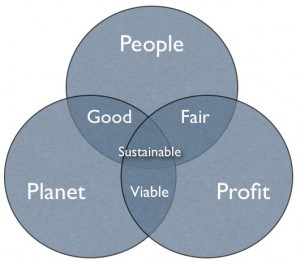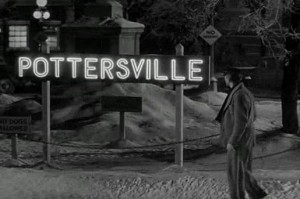 City Flipping. The term flipping a house refers to buying a home that’s in need of repair, fixing it up, and then selling it at a huge profit or simply enjoying a beautiful like-new home that cost you much less than what it’s now worth. Flipping a city is like flipping a house on a much larger scale. The City of Iowa City is now going through a massive renovation and revitalization effort that will likely cost millions of dollars.
City Flipping. The term flipping a house refers to buying a home that’s in need of repair, fixing it up, and then selling it at a huge profit or simply enjoying a beautiful like-new home that cost you much less than what it’s now worth. Flipping a city is like flipping a house on a much larger scale. The City of Iowa City is now going through a massive renovation and revitalization effort that will likely cost millions of dollars.
Holistic Development. To be successful, any revitalization effort of a city needs to be holistic and multifaceted by working toward beautification, public education, economic viability, and an emphasis on promoting mixed use spaces to create a walkable community such as The Peninsula Neighborhood in a downtown area. It’s essential to have this holistic perspective when considering long-term investments because a holistically viable community will be beneficial and profitable for all.
Hybrid Funding. Hybrid funding models will generally be stronger, more viable, and more equitable than single source initiatives. As a stool with three legs needs each leg to stand, funding efforts should draw from a variety of sources such as grants, TIFs, investment capital, and public driven fundraising efforts.

Triple Bottom Line. Just because a business venture is profitable, doesn’t guarantee its long-term viability. Ultimately developers must look beyond the bottom line to consider the triple bottom line by investing in sustainability, new urbanism, and renovations that beautify a downtown area.
Qualified Developers. In life and in business, sometimes the right thing do to isn’t always the most profitable thing to do. Yet, not all entrepreneurs or business owners have this understanding and commitment to higher ethics. For this reason, every involved and invested developer and agent must have a strong demonstrated commitment to the triple bottom line. This is essential.

Pottersville. Without a commitment to the triple bottom line, your city can quickly transform from being Bedford Falls to become Pottersville — the fictional town from the movie It’s a Wonderful Life that becomes filled with bars, strip clubs, brothels, casinos, and pawn shops.
Raising the Bar. One of the challenges faced by Iowa City is the profitability of bars. After years of unrestrained growth, there are now a disproportionate number of bars compared to other businesses in downtown Iowa City. If brothels and casinos were legal and profitable, we’d be overrun with them also. Because of these concerns, there’s an effort to raise the bar in Iowa City by brining in apartments, condos, retail stores, and offices. It’s challenging however, since property owners are accustom to charging $10,000 per month or higher for relatively small venues.
“It’s sad to see so many very nice businesses come and go in Iowa City’s downtown area. These are exceptionally run businesses that build large followings. Yet, it’s just too difficult for them to keep up with the bars who can pay much more in rent per month. When I ask business owners why they are moving out of the downtown area, they usually tell me that ultimately it was the high rent that made success impossible when also wanting to provide competitive value and savings to customers. In the past we had a hardware store and department store. Those are gone and many others with them. It’s nice to see some retail, residential, and business uses returning to downtown.” ~ Greg Johnson
Carrots and Sticks. While pure marketplace-driven urban development generally works, sometimes carrots or sticks are needed to shape the economic growth of urban areas. To address the problem of excessive bars (and drinking) in Iowa City, the City Council is now more assertively providing carrots (financial incentives to non-bar businesses) and sticks (21-only after 10PM legislation that reduces alcohol consumption and reduces profitability of bars).
- Sticks. Landlords who had previously been charging $10,000 per month for a downtown venue will be forced to lower their rent since the once lucrative business of selling alcohol is now less lucrative. In this new economic landscape, property owners will likely be renting as a retail store or office space rather than a bar.
- Carrots. Simultaneously, as local bar owners are earning less, local businesses are given a carrot (tax breaks and grants) to develop and invest in the downtown area. Funded projects for community beautification and building renovation are making the downtown area more attractive to businesses and their potential customers. It’s essential for the city to provide financial contributions toward a downtown area where many of the original buildings are over 100 years old. [example 1, example 2]
Downtown as a Brand. As an entity, a downtown area does not really have a brand, media presence, or marketing to shape public opinion. The public recognizes national brands (such as Starbucks) and local brands (such as Java House) which are developed after many years and many dollars to have a positive connotation (e.g. good products and good for the community). However, a downtown area is usually only brought into the public collective conscience through news stories (which are disproportionately negative).
Downtown as a Condo Association. Anyone who has lived in a condominium knows the importance of having a condo association. It’s what makes a condo different from a commune. By having an association, fees are collected to pay for all aspects of condo maintenance, upkeep, beautification, and the general increase of property value. It’s not enough to have a Chamber of Commerce. A collection of businesses in a downtown area is like a group of people living in a condominium. There’s more involved than just having coffee every other week. It’s essential that funds go into every aspect of a continued and ongoing downtown renewal plan and vision. [example]
Educating the Public. Many people have a misconception about the downtown Iowa City area.
“It often comes up in conversation, and I almost feel like a sales person, but I tell people about the downtown Iowa City area and all it offers. Many long-time Iowa City residents tell me it’s been years since they’ve come to the downtown area. I think events like Jazz Fest and the Old Capitol Criterium bicycle race are examples of events that can bring people downtown. But that experience is different than what happens on a daily basis, and people usually don’t take time to really explore the shops during those events. People have misconceptions about downtown.” ~ Greg Johnson
Think Locally, Live Locally, Act Locally. Greg Johnson, who coined the phrase “the art of flipping a city,” talks about current and future development in the Iowa City area and the importance of developers who live where they develop:
“The art of flipping a city is much like that of flipping a house with the caveat that after you’re done you plan to live there. I think as a developer, to value a community, and understand how it works, you need to live there. One developer in Iowa City I admire is the Moen Group. The owners of the business actually live and work in downtown Iowa City. Their projects provide excellent examples of how following the triple bottom line benefits everyone in the long-run.” ~ Greg Johnson
In the News. Those interested in supporting revitalization in Iowa City should learn more about the various initiatives and opportunities to support them. Below are news articles about various revitalization efforts in Iowa City.
- City Manager Explains Long-Term Vision for Iowa City (Daily Iowan, 4 May 2011)
- City Council Approves $250,000 in aid to Renovation Project at 118 E. College Street (Daily Iowan, 4 May 2011)
- City Council Approves $283,000 Gilbert Street Project (Daily Iowan, 4 May 2011)
- Business owners discuss tax increase for downtown ‘beautification’ project (Daily Iowan, 27 April 2011)
- Leaders defend ped mall project (Press Citizen, 19 April 2011)